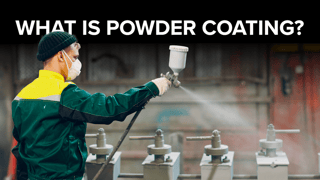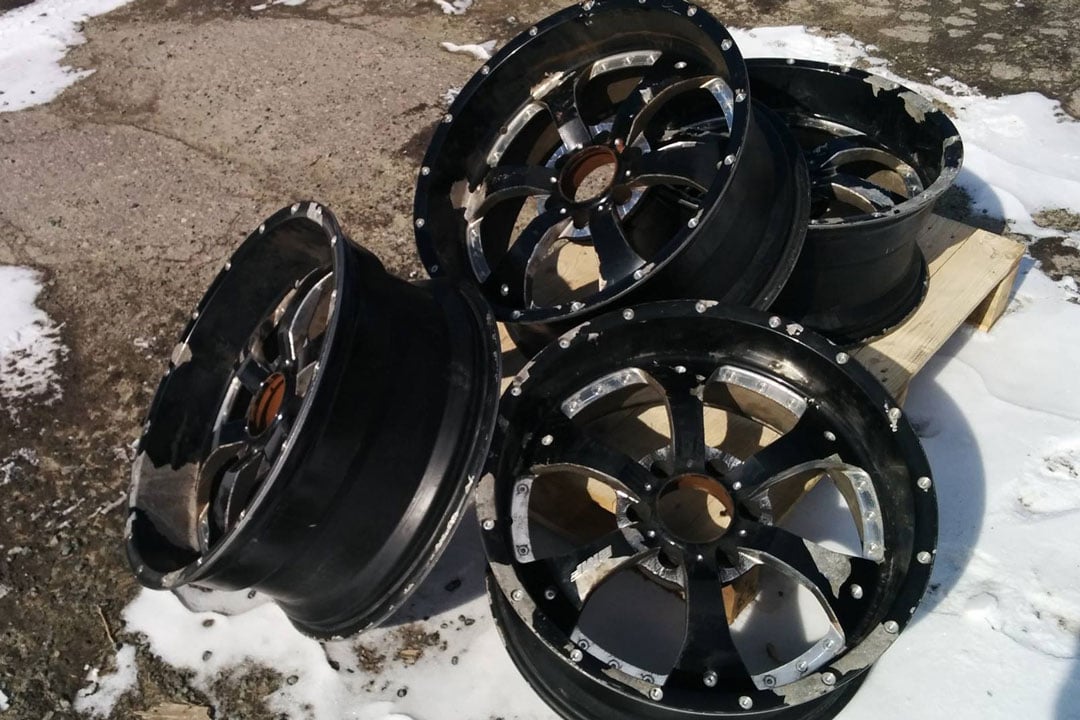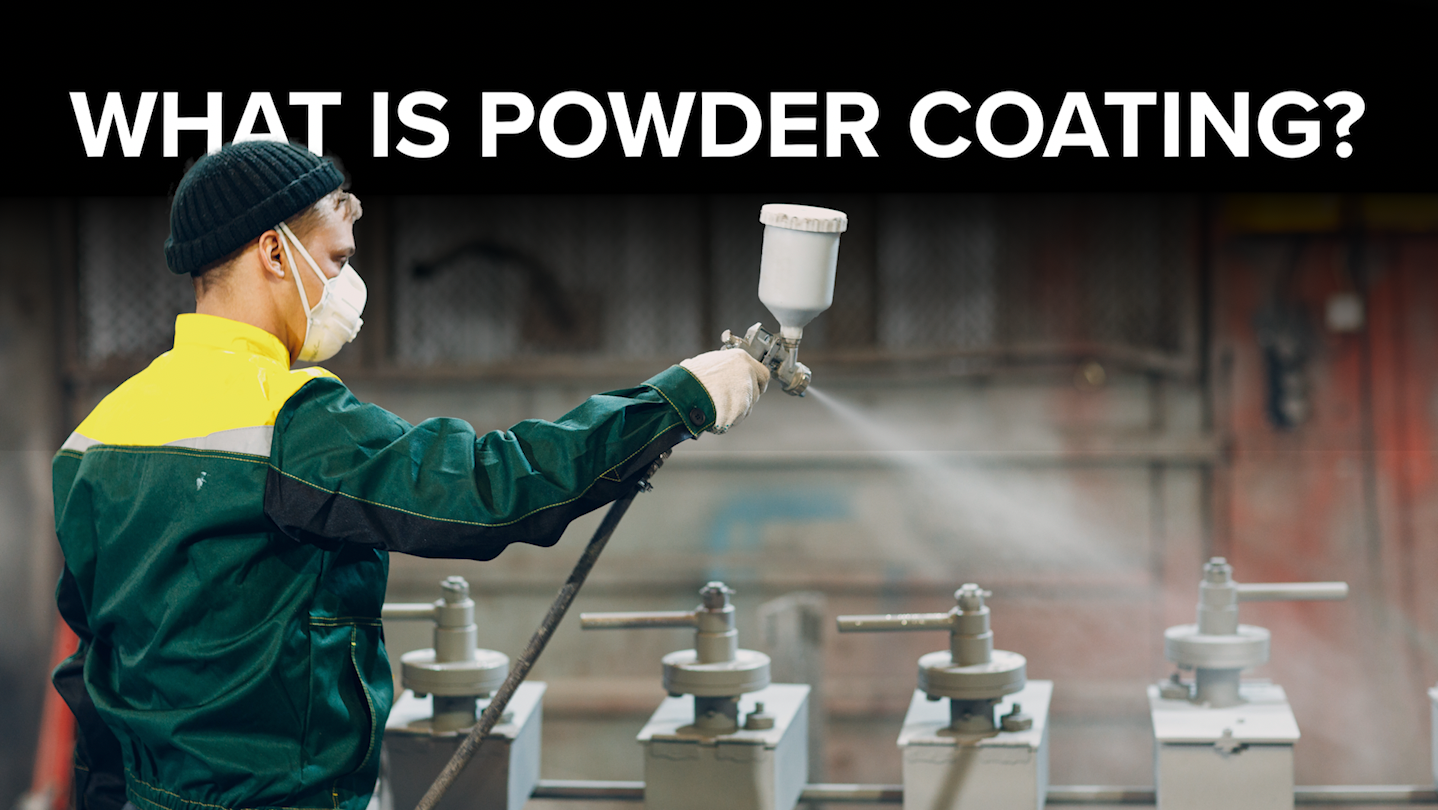What is powder coating?

Powder coating is a popular industrial finish that can be used to coat a variety of materials, including metals, plastics, and ceramics. It provides a strong finish that can last for years without deteriorating and will outlast the majority of other finishes. Powder coating typically works by applying the dry powder onto an item using an electric charge. This charge keeps the powder coat as tight as possible to the exterior. Once applied, the powder coating is then melted and bonded to the metal surface by heat and pressure, creating a durable finish.
The powder itself will contain resin and pigments for coloring, as well as other potential additives that help to reach the desired levels of thickness, hardness or shine. The process used to make the powder coating stick to the surface starts by pushing the powder through a spray gun with compressed air. The tip of the spray gun is equipped with an electrode that will provide an electrostatic charge to the powder, allowing for the particles to stick closer to the surface than they would if applied using a traditional method. This charge will keep the coatings tightly bound to the exterior of the item once sprayed on. Next the part will be placed in the curing oven. Once there, the powder coating will melt and combine as the temperature reaches a heat point between 350 and 400 degrees Fahrenheit. The heat point may vary depending on the specific form of coatings used. The length of the curing process is between 10-20 minutes and will depend on the thickness of the item being coated.
When is it Used?
Powder coated parts are used extensively in both the automotive and appliance industry. Powder coatings can resist corrosion and rust, providing a longer life for the product. Parts that are powder coated can also be more easily cleaned than those with a standard finish. It is a useful finish for products that will be exposed to a harsh outdoor environment. The added resistance to rust and corrosion that is provided by powder coatings allow the surfaces of steel beams, appliances, outdoor furniture, and similarly exposed material to stay clean and protected for much longer. There is a wide range of reasons as to why using powder coating may be the right option for the material you are looking to cover.

Because the coating is sealed onto the substrate with its electrostatic charge, the coating is held much tighter to the substrate. This means the likelihood of any potentially harmful moisture or air getting between the coating and the surface and causing rust or corrosion is minimal. The additional resistance powder coated steel has to rusting and corrosion means there is little to no maintenance required after the coating is applied.
Powder coats are higher on the hardness scale than conventional liquid paints are, meaning it can act as an extra protective layer that is less likely to chip or crack than other finishes. Though powder coating can help the metal or substrate to withstand additional pressure, it is still possible for it to receive a dent or ding. Powder coating is not completely resistant to physical damage, rust, or corrosion as is commonly stated. However a powder coated surface has a much lower chance of being harmed and will typically last much longer than other coatings. The powder coating process does not require harmful chemicals or solvents of any kind. Because of this, the process of powder coating emits almost no volatile organic compounds, or VOCs, and thus is considered environmentally friendly.
What is needed to start powder coating?
At its core, three pieces of equipment are necessary to properly perform the powder coating process. A spray gun, spray booth, and oven. Of course, you will also need the paint powder and your desired surface to complete your project.
There are two major forms of powder coats on the market today, thermoset and thermoplastic powders. The advantages of each of these powders are often the same and some resin-bases can come in a thermosetting or thermoplastic form. The methods of curing can differ however.
To learn more about the difference in curing and application, check out our blog.
Once you've chosen between a thermoset powder and a thermoplastic powder, you will have to choose which resin-base is best for your materials. The application process of each paint powder will remain mostly the same, but the quality and properties of each resin will vary. You will need to know which properties and components are most important for your items. Some of the most common forms of resin paint powders are:
Epoxy. Epoxies present what may be the best combination of hardness and corrosion resistance among all powder paints. Epoxies will also adhere to metal very easily, especially if the metal has been pretreated and is completely clear of dust and debris.
Polyesters and Super Durable Polyesters. Polyesters are the most commonly seen powder paint. They are more affordably priced, come in more color options, and are heated at a lower temperature, making it easier to apply to items that could be considered more fragile. Polyesters won't protect the surface the same way that epoxies or other kinds of paint powder coatings may be able to, but still offer more resistance than traditional liquid coatings. Super Durable Polyesters were made to make polyesters more durable while still keeping the appearance they are known for.
Epoxy-Polyester Hybrid. The polyesters in this hybrid will bring down the durability of the epoxy. However the addition of polyesters allows for a wider variety of cosmetic looks. When these forms of powder are combined, the hybrid product become much more suitable for indoor appliances and other household items
Urethane. Urethanes are similar to polyesters in their chemical makeup, but Urethanes manager to offer better exterior durability as well as good chemical and corrosion resistance. They are typically more expensive than the other powder coatings.
To read more about all things powder coating, check out this post.
